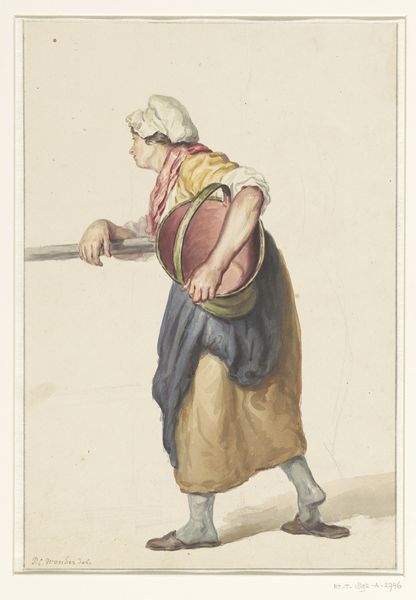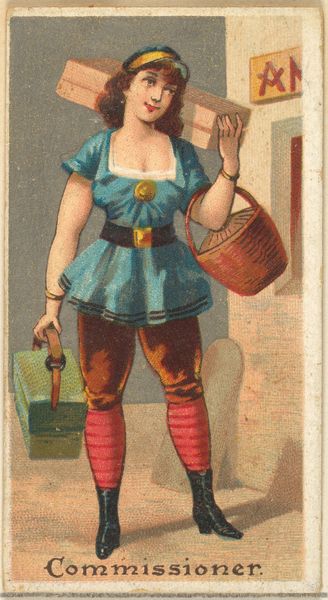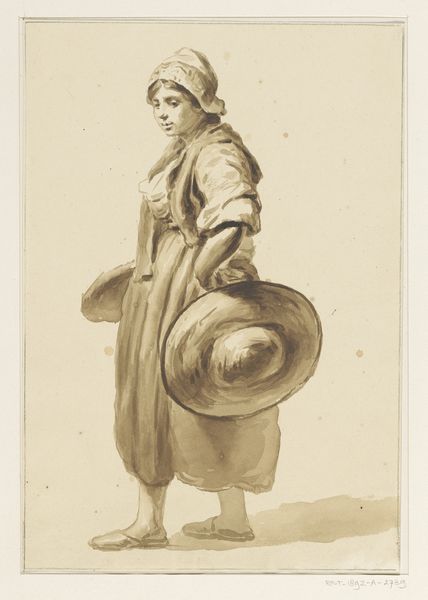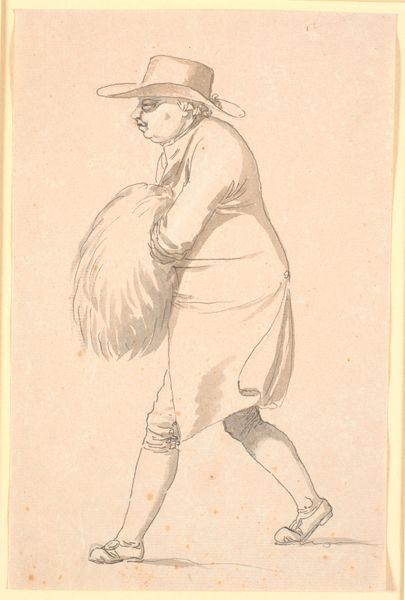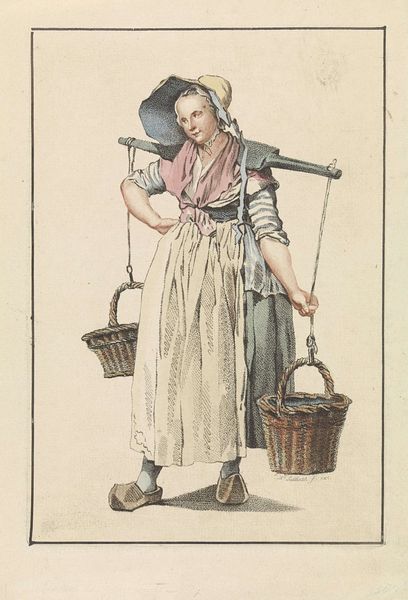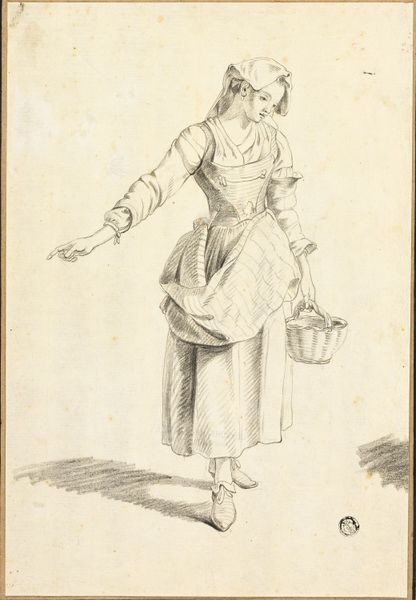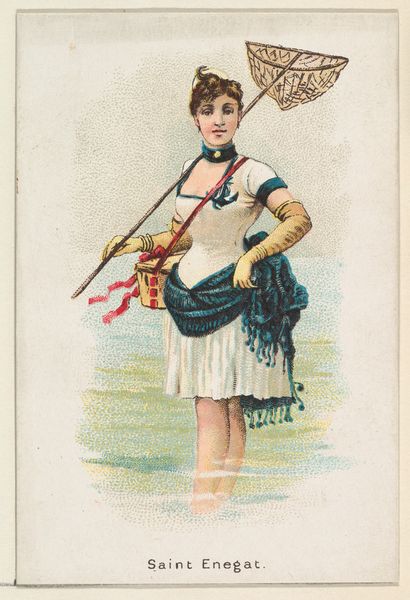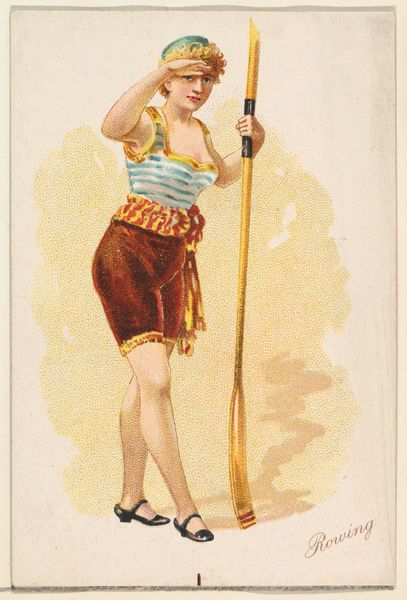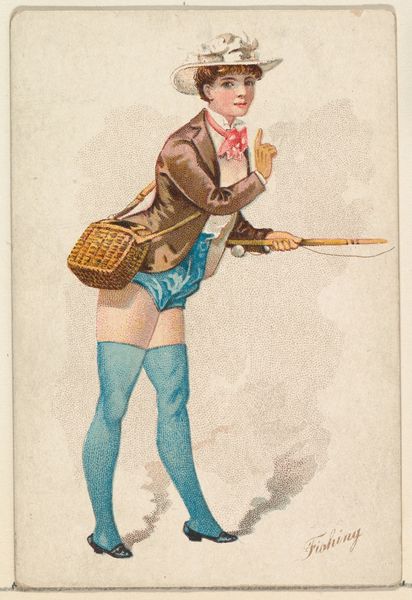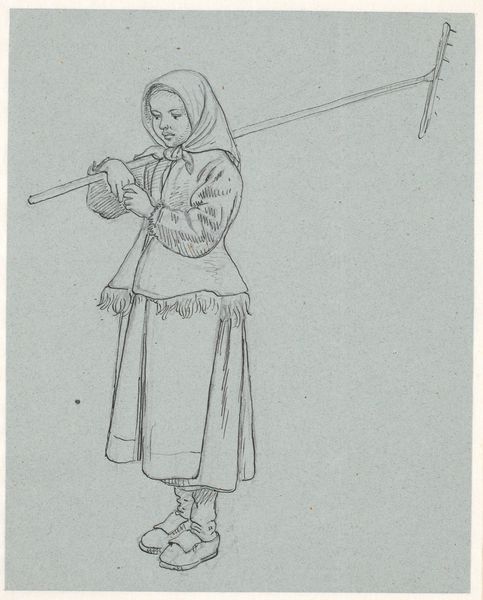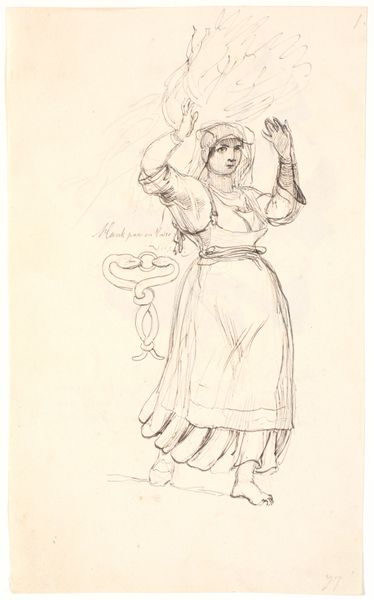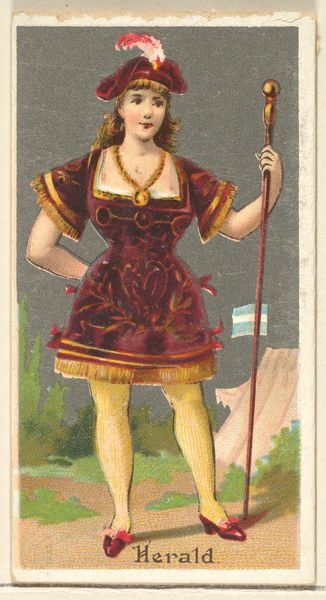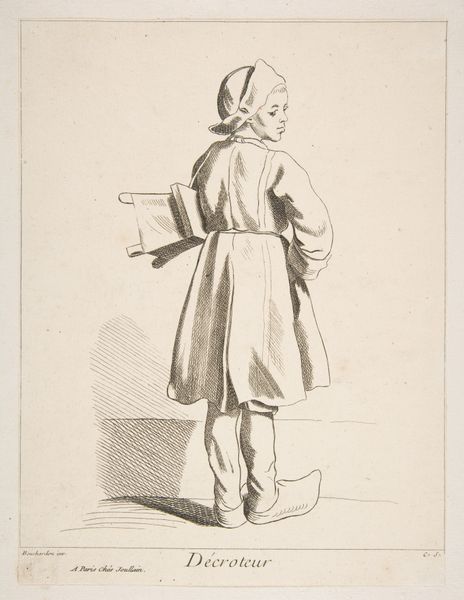
Barbenet bondepige med et brændeknippe på hovedet 1846
0:00
0:00
drawing, watercolor
#
portrait
#
drawing
#
landscape
#
watercolor
#
romanticism
#
genre-painting
Dimensions: 192 mm (height) x 108 mm (width) (bladmaal)
Curator: Welcome. Today we will be discussing "Barbenet bondepige med et brændeknippe på hovedet," a watercolor and drawing created around 1846 by Johan Thomas Lundbye and housed at the SMK - Statens Museum for Kunst. What's your initial read? Editor: It strikes me as rather melancholic, despite the vibrant palette. Her determined gaze clashes with what seems to be an overtly burdened posture and that substantial stack of wood. There's a real contrast there. Curator: Precisely. Notice the artist's masterful use of line and wash to model the figure. Lundbye's attentiveness to detail in depicting the woman’s form provides a sense of volume and physicality to the figure that is offset by the stark and largely unarticulated background. We see the principles of Romanticism at play here, which often depicted idealized but naturalistic forms. Editor: Indeed. The figure here performs labor, but she does so front-and-center as the singular focus, framed against the stark, unpopulated background. I find myself wondering what life was like for peasant women in Denmark at the time. Was Lundbye commenting on the burdens placed upon these working women? Was he making observations on class, or celebrating her atttributes? Curator: Perhaps a bit of both. Genre paintings like this, that attempt to depict daily life, often served as documentation of cultural practices but also as social commentary. Observe Lundbye's focus: her bare feet and strong arms speak to the demanding physical labor, which does humanize her while arguably exoticizing her labor and station in life. Editor: Exactly. The rendering of her bare feet evokes vulnerability and humility, reminding us of her social status but also a certain dignity of posture, if only by juxtaposition. Her gaze conveys an inner resolve but a deep exterior pain. I wonder how contemporary audiences would react to this celebration, however subtle, of a working woman. Curator: A relevant point. It asks us to look closely at the representation of women in art historical traditions and question the gazes through which they're framed. A great way to explore issues of gender, class, and the way identities are constructed and conveyed, visually, in art. Editor: Yes, precisely. It gives me chills to contemplate her experiences. And it allows a richer consideration of the social currents that inform every artwork. Curator: Thank you. With that, we will move to our next work. We hope you were able to hone your eye and look more closely at how art is influenced by social discourse.
Comments
No comments
Be the first to comment and join the conversation on the ultimate creative platform.
